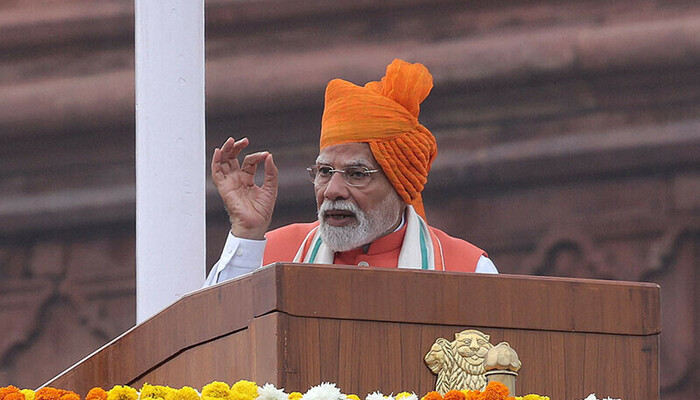Amid rising tensions with Washington, India self-reliance took center stage in Prime Minister Narendra Modi’s Independence Day speech. Addressing the nation from New Delhi’s Red Fort, Modi pledged energy independence, advanced defense systems, and an unyielding defense of India’s economic and agricultural interests. His remarks came as the United States threatens to double tariffs on Indian imports by the end of August.
Independence Day Speech Amid Trade Tensions
The speech unfolded against the backdrop of a strained US–India relationship. Washington has demanded that India halt its purchases of Russian oil, a major source of revenue for Moscow during the Ukraine conflict. The ultimatum from President Trump has added pressure to an already complex diplomatic equation.
Modi avoided direct references to Trump but made his position clear. “Self-reliance is the foundation of developed India,” he declared. “Freedom becomes meaningless if someone becomes too dependent on others.” His words resonated with the invited audience as military helicopters performed a flypast, showering flower petals over the crowd.
Read: Jeff Bezos Mourns Death of Mother Jacklyn Bezos at 78
US Ultimatum and Tariff Threats
The White House has set an August 27 deadline for India to switch crude suppliers or face tariff hikes from 25% to 50% on new imports. The move is seen as an attempt to pressure New Delhi into aligning with Washington’s energy policy on Russia.
India, however, has maintained its right to choose its energy partners. “We know we remain dependent on many countries to meet our energy needs,” Modi acknowledged. “But to build a truly self-reliant India, we must achieve energy independence.”
Focus on Farmers and Economic Security
Agriculture remains a core political issue in India. Modi emphasized that he would “stand like a wall” against any policy that harms farmers. He argued that economic resilience comes from strength, not fear. “When economic selfishness is rising day by day… we must not just sit and worry about the crisis but instead focus on our strengths,” he said.
This stance reflects India’s broader trade concerns, where agricultural subsidies and market protections often clash with international trade demands.
Call for Technological Independence
Beyond energy and agriculture, Modi urged India’s scientists and engineers to prioritize homegrown technology. He listed fighter jet engines, semiconductor chips, and military hardware systems as key targets for development.
“We will have India-made semiconductor chips in the market by the year’s end,” he promised. He also revealed plans for a future Indian space station and a domestic “defense shield” within the next decade. While details were sparse, these ambitions point to a strategic push for high-tech self-sufficiency.
Military Confidence and Regional Tensions
Modi took time to honor the armed forces, highlighting their role in the recent four-day conflict with Pakistan. The clashes ended in a ceasefire on May 10, but not before air strikes and retaliatory operations left both sides with casualties.
“India will give a befitting reply to any other misadventure by the enemy,” Modi warned. He also underscored New Delhi’s suspension of the Indus Waters Treaty (IWT), stating, “India has decided that blood and water will not flow together.”
The May conflict began after India accused Pakistan of orchestrating the April 22 Pahalgam attack, a charge Islamabad firmly denied. In response, New Delhi put the IWT on hold, an action Pakistan labeled an “act of war.”
Fallout Over Indus Waters Treaty
Pakistan argued that the treaty cannot be suspended unilaterally and considered legal action under the 1969 Vienna Convention on the Law of Treaties. On May 6–7, the situation escalated further when India launched air strikes that killed civilians. In retaliation, Pakistan Air Force downed six Indian planes in aerial combat on May 7.
India’s top general later admitted that its forces suffered losses in the air but disputed the figure of six aircraft. The incident deepened mistrust between the neighbors and added another layer to India’s already complex security landscape.
Looking Ahead
As India navigates the twin challenges of external trade pressure and regional security threats, Modi’s message of self-reliance signals a deliberate policy direction. His emphasis on energy independence, technological development, and defense readiness positions India for a more autonomous future—one where external demands meet an increasingly firm domestic stance.
Follow us on Instagram, YouTube, Facebook,, X and TikTok for latest updates
